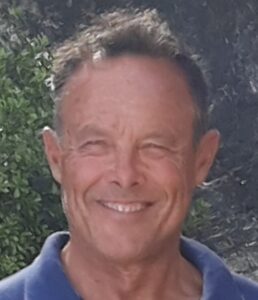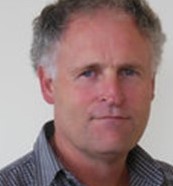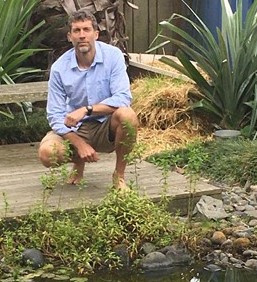All of us (Mal, Chris and Tim) worked at NIWA Hamilton, for a combined total of about 60 person-years.
Before setting up RMA Science, Mal was a director and partner at Streamlined Environmental Ltd. Tim was also at Streamlined, where he worked on a part-time contracting basis, with the rest of his time working remotely for CDM Smith in the US. Chris finished up at NIWA in 2020.
As a team and as individuals, we have a wealth of New Zealand experience, good contacts, and a sensible perspective on how things here work. We are pleased to be hanging out a shingle together as RMA Science.
Dr Malcolm Green – Estuarine, Coastal and Marine Science | Certified RMA Decision Maker
mal@rmascience.co.nz / 021 236 1844
I’m a reformed Australian, have been around for a while, but am still useful.
 Here is where I provide my credentials. After gaining a BSc with First Class Honours in marine science at the University of Sydney, I headed to the Virginia Institute of Marine Science to do a PhD on sediment transport on the U.S. Mid-Atlantic Bight inner continental shelf. Following that was a 6-year stint at the University of Cambridge, where I did post-doctoral research on sediment transport, boundary-layer flows and waves in the shallow seas around the British Isles. It was then onto NIWA (Hamilton, New Zealand), where my research moved further inshore into estuaries, and I worked widely in the government, local authority, industry, Maori and community sectors. When I left NIWA in 2016, I was Principal Scientist for Estuarine and Coastal Physical Processes, the leader of a large MBIE-funded research programme that was developing the science, information and tools needed for limits-based management of freshwater and estuarine ecosystems under the National Policy Statement for Freshwater Management (NPSFM), and the leader of NIWA’s core Catchment to Estuaries research programme. I subsequently joined Streamlined as a partner and Director, where I was able to provide clients with more quality time.
Here is where I provide my credentials. After gaining a BSc with First Class Honours in marine science at the University of Sydney, I headed to the Virginia Institute of Marine Science to do a PhD on sediment transport on the U.S. Mid-Atlantic Bight inner continental shelf. Following that was a 6-year stint at the University of Cambridge, where I did post-doctoral research on sediment transport, boundary-layer flows and waves in the shallow seas around the British Isles. It was then onto NIWA (Hamilton, New Zealand), where my research moved further inshore into estuaries, and I worked widely in the government, local authority, industry, Maori and community sectors. When I left NIWA in 2016, I was Principal Scientist for Estuarine and Coastal Physical Processes, the leader of a large MBIE-funded research programme that was developing the science, information and tools needed for limits-based management of freshwater and estuarine ecosystems under the National Policy Statement for Freshwater Management (NPSFM), and the leader of NIWA’s core Catchment to Estuaries research programme. I subsequently joined Streamlined as a partner and Director, where I was able to provide clients with more quality time.
I have a good understanding of processes under the Resource Management Act, and I have been deeply involved in the implementation of limits-based management under the NPSFM. I served on the Modelling Leadership Group that supported the Te Awarua-o-Porirua Whaitua collaborative planning process; led the Kaipara Harbour Sediment Mitigation Study, which developed a model of Kaipara Harbour and its catchment for assessing costs and benefits of sediment mitigation; and was a lead science writer for the Hauraki Gulf Tai Timu Tai Pari Marine Spatial Plan.
I am a Certified RMA Decision Maker. Recently, I have served as an independent commissioner on panels hearing an application by Wairoa District Council to re-consent their wastewater discharge into the Wairoa River, and by Port of Napier for resource consents for dredging and wharf construction. I also served on a panel hearing an application for consent to remove mangroves from a Northland harbour. I love doing this kind of work. I get to really immerse myself, not just in the science, but also in planning and the law, and I take seriously the responsibility of making a good decision. On the other side of the floor, I have provided expert evidence at Environment Court (Kaipara Harbour sand mining; Okura rural intensification), local authority consent and plan change hearings, and an EPA hearing (Taranaki ironsands).
My research interests and expertise span estuarine and coastal sediment transport by waves and currents, boundary-layer flows, flow–biota interactions, waves, sediment transport and the estuarine turbidity maximum in tidal creeks, limits-based management, methods for predicting decadal-scale estuarine sedimentation, urban contaminants and water quality. I have published first-authored, peer-reviewed journal articles on all of those, and then some.
As for my career, I’ve had a few honours along the way, such as winning the 2009 Kudos Award for Environmental Science in recognition of my leading role in applying science to issues threatening the coasts of New Zealand, the 2015 NIWA Research Excellence Prize and, as a PhD student in the States, the 1987 J.M. Zeigler Outstanding Student Achievement Award at the Virginia Institute of Marine Science.
Download Mal Green’s CV here. Click here for Mal’s experience as an independent commissioner, and here to see the other things that he does. Click here to return to top.
Dr Chris Hickey – Ecotoxicology & Environmental Chemistry
chris@rmascience.co.nz / 0274 867 429

I’m working on my page. Click here to return to top.
Dr Tim Cox – Water Resources Science, Engineering and Modelling
tim@rmascience.co.nz / 022 386 0856

I have over 20 years of experience in water resources science and engineering. Throughout that time, mathematical modelling has been my “go to” for solving problems, understanding complex systems, interpreting datasets, and supporting decision-making.
I honed my skills as a modeller through my academic work, as a researcher at CADSWES (Colorado) and NIWA, as a consultant with CDM Smith and Streamlined Environmental, and under the tutelage of the likes of Kit Rutherford, Steve Chapra and many other outstanding teachers and mentors. I believe that every good modeler needs a strong understanding of the science of the systems being modelled. My knowledge base spans hydrology, water quality in lakes and streams, water supply planning, climate change and variability, and a smattering of freshwater ecology. I also have experience in incorporating economics into water quality models. I like being involved in the collection of the data critical to accurate modelling and have extensive experience in designing and conducting field investigations.
I am the principal developer of a suite of water resources planning software tools including the Simplified Water Allocation Model (SWAM), the Contaminant Allocation and Simulation Model (CASM), and the Simplified Lake Analysis Model (SLAM). These tools have been used widely, in New Zealand and abroad, to support project-specific investigations and, in some cases, to provide ongoing decision support for government agencies and industry.
In all of my software development, I endeavor to distill complex science into useful, and usable, tools that still deliver the required level of scientific rigour and resolution, commensurate with the data and resources available. I like Einstein’s famous saying, “everything should be made as simple as possible, but no simpler”. I also like this one, from Dr. George Box: “Since all models are wrong, the scientist must be alert to what is importantly wrong. It is inappropriate to worry about mice when there are tigers abroad.” An understanding of uncertainty is critical to model development and to the appropriate application of the models. This continues to be a point of emphasis in my work. I also take pride in taking the time to collaboratively select the right approach and tools for tackling a science or engineering problem. There is truly no “one size fits all” in the water resources world.
Lastly, I enjoy working within teams of collaborators, clients and stakeholders, and I consider myself to be pretty good at communicating complex science and modelling in an understandable way
Download Tim Cox’s CV here. Click here to return to top.
